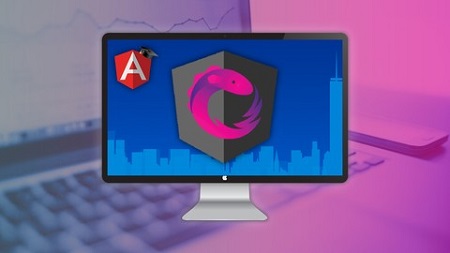
English | MP4 | AVC 1280×720 | AAC 44KHz 2ch | 8.5 Hours | Lec: 89 | 0.98 GB
Covers Angular 4 (formerly Angular 2) – Learn the Angular Ngrx Store Library, Build a Chat Application
The course will start with a short architectural overview on the Facebook counter problem, Flux and unidirectional data flow. We will then dive straight into the building of the frontend of our chat application.
Once we have a store solution up and running we are going to introduce the Dev Tools and add more libraries of the Ngrx ecosystem step by step.
What Will You Be Able to to at the End Of This Course ?
The goal of the course is simple: you will be proficient in the Flux and single store architectures and will know when to use a store solution and why, what are the reasons and more common use cases for doing so.
You will be able to use Typescript to model all the data structures needed for the several different layers of your application. You will know how to develop applications using RxJs and the Ngrx Store, understand the concepts related to store architectures and know how to setup the developers tools and use the most important libraries of the Ngrx ecosystem.
In this course we are going to learn the Angular Ngrx library ecosystem, namely everything that revolves around the Ngrx Store and Ngrx Effects library, and store architectures in general.
The course covers the Angular 4 release (the previous release was Angular 2), and consists on building step-by-step a chat application.
We are going to build step by step a chat application that reproduces the situation that the Facebook team faced with the unread messages counter. We are going to solve the problem not by using the original Flux dispatcher, instead we are going to use a derived single store RxJs-based solution: The Angular Reactive Extensions Ngrx Store.
We are going to use the Angular CLI to quickly scaffold an application, and implement the frontend of the chat application from scratch: from an empty folder – every line of code will be explained.
The backend will also be explained but we will initially get a running backend as a starting point, so that we focus on the frontend architecture and the store solution.
We are going to build the application using Reactive Programming principles and a set of libraries of the Angular Reactives Extensions (Ngrx) Ecosystem: this will include the Ngrx Store, Ngrx Effects, DB, Router integration.
We are going to cover the benefits of Immutability and OnPush change detection, its advantages and disadvantages.
What Will you Learn In this Course?
We are going to learn how to leverage Typescript to clearly define the domain model, the view model and even transfer models of our application, as well as the application state that goes inside the store.
We are going to learn what types of state are usually kept inside the store, and how they relate to the state in the database. We will learn all the usual concepts of Store architectures: Actions, Dispatching and Reducers.
We will cover the Ngrx Dev Tools including the time-traveling debugger, and we will introduce a small utility library to helps us debug RxJs applications in general. We will cover debugging techniques for our Typescript code in both the client and the server.
We will cover backend API design for frontends that use store architectures: what type of API to design if building an API from scratch, and how to integrate a store with existing APIs.
Resolve the captcha to access the links!